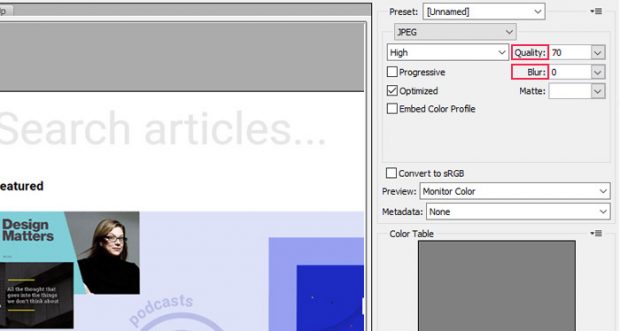
The goal is to reduce the amount of data a user has to download, so they can get the content they’re looking for faster. You can optimize your images in the creation phase (such as using the right “Export” options in Photoshop) or directly on your website (such as using lazy load to display media on your site). Generally speaking, image optimization is the act of decreasing file size without losing quality. In this step-by-step guide to image optimization, I’ll cover: There are a lot of little things you can do throughout the image creation process to optimize file sizes, specifically with your website in mind. So, how do you balance site performance with visual design? And remember, the whole point of adding images to your website is to create a better experience for your users (or maybe even to increase sales and conversions!), which is hard to do with a slow site. AKA, images are often the cause of poor site performance. With higher resolutions comes larger file sizes, which also means slower loading times.

Having great visuals, however, can take a toll on your website.

From visualizing data to breaking up paragraphs of text to showing off your portfolio work, photos and graphics are an important part of most website designs and help users have great online experiences. There’s no doubt that images are an invaluable asset to the world wide web.


 0 kommentar(er)
0 kommentar(er)
